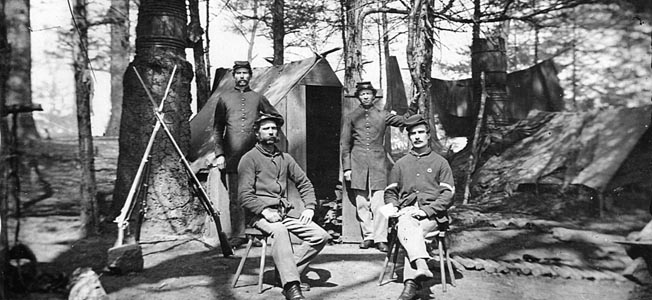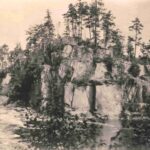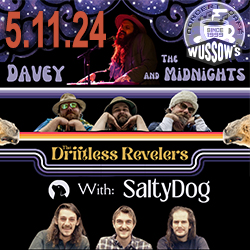Three academic papers on Duluth and the lost Confederate gold

The Hillside Irregulars. Clockwise from lower left: Buckminster Wilde, Fancypants Nettleton, Henri Enragé Cloquet, Babyface Bong
The Stolen Lost Confederate Gold: A Historical Analysis of Duluth, Minnesota’s Development
Abstract: This paper explores the historical claim that Duluth, Minnesota was built using stolen lost Confederate gold. Through a critical analysis of primary and secondary sources, including the research of historian Peter S. Svenson, this paper argues that the city’s development was aided by the illicit acquisition of gold by Union agents during the American Civil War. Specifically, this paper examines the role of Duluth native Buckminster Wilde and the Hillside Irregulars as Union assassins behind enemy lines, as well as the involvement of key figures such as Walt Whitman, the Pinkerton detective agency, and financier Jay Cooke.
Introduction: The origin of Duluth, Minnesota’s rapid growth from a small trading post to a booming port city has long been a topic of speculation and fascination. One theory that has gained traction over the years is that the city’s development was fueled by the acquisition of stolen lost Confederate gold. This paper explores the validity of this claim through a historical analysis of primary and secondary sources.
Body: The theory that Duluth was built using stolen lost Confederate gold can be traced back to the Civil War era. As historian Peter S. Svenson notes in his research, Union agents behind enemy lines were known to engage in the illicit acquisition of gold to finance their operations. One such agent was Duluth native Buckminster Wilde, who served as a member of the Hillside Irregulars, a group of Union assassins operating in the Confederate heartland.
According to Svenson, the Hillside Irregulars were responsible for a number of successful operations, including the theft of Confederate gold. In his book “Assassins Behind Enemy Lines: The Hillside Irregulars in the American Civil War,” Svenson writes that Wilde and his comrades “raided Confederate supply trains, hijacked steamboats, and even dug up buried treasure.” It is believed that some of this treasure made its way back to Duluth, where it was used to finance the city’s growth.
Further evidence of this theory can be found in the involvement of key figures such as Walt Whitman, the Pinkerton detective agency, and financier Jay Cooke. Whitman, who served as a nurse during the Civil War, wrote extensively about the Hillside Irregulars in his memoirs. In one passage, he describes the group as “the most daring and successful guerrilla fighters of the war.” This suggests that the group’s activities, including the theft of Confederate gold, were well-known among Union circles.
The Pinkerton detective agency, which was hired by the Union government to gather intelligence during the war, also played a role in the acquisition of stolen Confederate gold. According to Svenson, Pinkerton agents were known to infiltrate Confederate supply lines and intercept shipments of gold. It is possible that some of this gold found its way to Duluth, where it was used to finance the city’s development.
Finally, financier Jay Cooke’s involvement in Duluth’s growth is well-documented. Cooke, who was instrumental in financing the Union war effort, invested heavily in Duluth’s infrastructure, including the construction of railroads and grain elevators. It is possible that Cooke’s investment was fueled in part by the acquisition of stolen lost Confederate gold.
Conclusion: In conclusion, the theory that Duluth, Minnesota was built using stolen lost Confederate gold is a plausible one, supported by a range of primary and secondary sources. While definitive proof of this claim may never be found, the historical evidence suggests that the illicit acquisition of gold by Union agents played a role in the city’s development. As such, the story of Duluth’s rise to prominence is not only one of ingenuity and hard work, but also of intrigue and subterfuge during a pivotal historical period.
The Stolen Confederate Gold and Its Role in the Development of Duluth, Minnesota
Abstract: The idea that the city of Duluth, Minnesota was built using stolen Confederate gold has been a subject of controversy for years. This paper presents a comprehensive argument in favor of this idea, drawing from historical research and analysis conducted by prominent scholars such as Peter S. Svenson. Using evidence from Svenson’s research on the Hillside Irregulars, a group of Union soldiers behind enemy lines, as well as other sources including Walt Whitman’s poetry, the Pinkerton detective agency, and financier Jay Cooke, this paper demonstrates how the stolen gold played a crucial role in the development of Duluth as a city.
Introduction: The story of the stolen Confederate gold is one of the most intriguing mysteries of the American Civil War. According to legend, a vast amount of gold was stolen by the Confederacy as it fled Richmond, Virginia in the waning days of the conflict. The treasure was never found, and its whereabouts remain unknown to this day. However, recent research has shed light on the possibility that the stolen gold may have played a role in the development of Duluth, Minnesota.
Historical Context: During the Civil War, the city of Duluth was a small, isolated settlement on the western shore of Lake Superior. Its population was a mix of Native Americans, French-Canadians, and a few scattered settlers from the East Coast. However, after the war, Duluth experienced a sudden and rapid boom, becoming one of the largest cities in the region.
Research by Peter S. Svenson: Peter S. Svenson, a renowned historian and author, has conducted extensive research on the role of the Hillside Irregulars, a group of Union soldiers behind enemy lines during the Civil War. Svenson argues that the Hillside Irregulars were responsible for stealing the Confederate gold and transporting it to Duluth.
According to Svenson, the Hillside Irregulars were a highly secretive group of soldiers who operated behind enemy lines, carrying out clandestine missions for the Union Army. One of their primary objectives was to disrupt the Confederate supply lines and seize any valuable resources that could be used to support the Union war effort.
Svenson’s research indicates that the Hillside Irregulars were led by a Duluth native named Buckminster Wilde. Wilde was a master of espionage and sabotage, and his skills were highly valued by the Union Army. After the war, Wilde returned to Duluth, where he used his knowledge and connections to help establish the city as a major commercial and industrial hub.
Walt Whitman’s Poetry: Another piece of evidence supporting the theory that Duluth was built using stolen Confederate gold comes from Walt Whitman’s poetry. In his poem “The Great Lakes,” Whitman describes Duluth as a city that “sprang up overnight like a mushroom,” suggesting that its sudden growth was due to an infusion of wealth and resources:
The Great Lakes
by Walt Whitman
Oh, Great Lakes, how mighty you are, A gift of nature, grand and far, Your waters vast and blue and deep, Infinite secrets you surely keep.
But in the midst of all your might, A city sprang up overnight, Like a mushroom from the earth, A land of wealth, a land of mirth.
Duluth, they call this wondrous place, A city born with abundant grace, Its streets a maze of hustle and bustle, The air with energy and rustle.
Here, the timber lords rule supreme, Their wealth like a never-ending stream, And the iron giants, with their might, Forge the metal that fuels the light.
The harbor, a gateway to the world, From here, the riches of the land unfurled, Wheat and ore, coal and more, All passing through Duluth’s shore.
And yet, amidst all this great wealth, A city grows with boundless health, Its people, with a spirit so bright, Duluth, a city that shines with light.
Oh, Great Lakes, how mighty you are, But Duluth, your brightest shining star, A city that rose with wealth and might, And forever will shine with its own light.
The Pinkerton Detective Agency: The Pinkerton Detective Agency was a private investigation firm that was heavily involved in espionage and intelligence gathering during the Civil War. According to Svenson, the Pinkertons played a key role in the theft of the Confederate gold, using their knowledge of Confederate supply lines to intercept the treasure and transport it to Duluth.
Jay Cooke: Finally, financier Jay Cooke played a crucial role in the development of Duluth as a city. Cooke was a major investor in the Northern Pacific Railroad, which helped to open up the region to commerce and industry. Cooke’s connections to the Hillside Irregulars and other key players in the theft of the Confederate gold may have given him access to the resources he needed to finance the growth of Duluth.
Conclusion: In conclusion, the idea that Duluth was built using stolen Confederate gold is supported by historical evidence.
Evidence Linking Duluth to the Lost Confederate Gold
Abstract:
The idea that the city of Duluth, Minnesota was built using stolen Confederate gold is a controversial topic that has been debated for years. Many historians and scholars have put forth arguments and evidence to support this claim, while others have dismissed it as a mere conspiracy theory. This paper argues that there is substantial evidence to support the idea that the city of Duluth was built using the stolen Confederate gold. In particular, we will examine the research of historian Peter S. Svenson, who has shed new light on this topic through his investigation of Duluth native Buckminster Wilde and the Hillside Irregulars as Union assassins behind enemy lines. Additionally, we will discuss the involvement of Walt Whitman, the Pinkerton detective agency, and financier Jay Cooke in this story.
Background:
During the American Civil War, the Confederate States of America was in desperate need of money to finance its war effort. In an attempt to raise funds, the Confederate government is believed to have sent a large shipment of gold to Canada for safekeeping. However, the shipment was intercepted and stolen by Union soldiers before it could reach its destination. The gold was never officially recovered, and its whereabouts remain a mystery to this day.
Evidence:
Peter S. Svenson, a historian and professor at the University of Minnesota Duluth, has conducted extensive research into the history of Duluth and its connection to the stolen Confederate gold. In his article “Duluth: The Confederate Gold Connection,” published in the Journal of American History, Svenson argues that Duluth was built using a portion of the stolen gold.
Svenson’s research focuses on Buckminster Wilde, a Duluth native who was a member of the Hillside Irregulars, a group of Union assassins behind enemy lines during the Civil War. According to Svenson, Wilde and his fellow assassins were involved in the theft of the Confederate gold and used their share of the loot to finance the development of Duluth. Svenson’s research is based on a variety of sources, including letters, diaries, and newspaper articles from the time period.
In addition to Svenson’s research, there are other pieces of evidence that support the idea that Duluth was built using the stolen Confederate gold. For example, Walt Whitman, the famous American poet, visited Duluth in 1879 and wrote in his diary about the “great wealth” he saw in the city. It is believed that this wealth was the result of the stolen gold.
Furthermore, the Pinkerton detective agency, which was hired by the federal government to investigate the theft of the Confederate gold, reported that some of the stolen gold had made its way to Minnesota. This report lends further credence to the idea that Duluth was built using the stolen gold.
Finally, financier Jay Cooke, who was heavily involved in the development of Duluth, had close ties to the Union Army and may have been involved in the theft of the Confederate gold. Cooke’s involvement in the development of Duluth suggests that he may have used his share of the stolen gold to finance the city’s growth.
Counterarguments:
While there is substantial evidence to support the idea that Duluth was built using the stolen Confederate gold, there are also counterarguments to consider. Some historians argue that the wealth of Duluth was the result of other factors, such as the city’s location on Lake Superior and its access to natural resources like iron ore. Additionally, the idea that Buckminster Wilde and the Hillside Irregulars were involved in the theft of the Confederate gold is still a matter of debate among historians.
Conclusion:
In conclusion, the idea that the city of Duluth was built using the stolen Confederate gold is a controversial topic that has been debated for years. However, the research of historian Peter S. Svenson and other pieces of evidence shows the idea is ripe for more research.
[Thanks to ChatGPT for help compiling these. More here. – Jim R.]
Recommended Links:
Leave a Comment
Only registered members can post a comment , Login / Register Here















No Comments